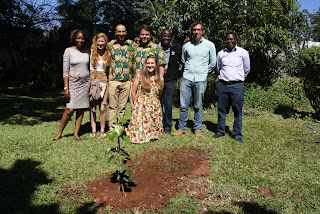Bring out yer dead, bring out yer dead!
I'm not dead.
'Ere, he says he's not dead.
Yes he is.
- Monty Python and the Holy Grail
It's not an easy thing making an entirely new set of friends, having that set added to and taken away from - constantly evolving and shifting people in one's life. After nearly three years of hellos, goodbyes, and the comings and goings of really great people I'm glad my time is soon coming to an end... when I too will be "Peace Corps dead."
I don't know who first coined the term "Peace Corps dead," but it's absolutely perfect. Here, in Peace Corps, we're all in our own world and all we really know is Peace Corps. What you're like before Peace Corps or what you'll end up like after Peace Corps is completely irrelevant. You're judged and accepted by what you've done here, how you acted here, and how others view those actions (sometimes with very little information to go on). Then one day you're gone... it's like you've died. And effectively you have, because you're no longer a part of the Peace Corps world, the Peace Corps' sphere of existence.
When it comes time to say goodbye to friends made here I've noticed the majority of people say goodbye to one another like they'll see each other again, but I think most know they won't. In some ways it's like a summer camp mentality - "Yes, of course we'll stay in contact! What would I do without you?" You just keep going on, that's what you do.
It gets hard after three years of goodbyes to keep up the appearance of "Oh, yeah, we'll still be friends." I've learned it is better to quickly say goodbye and be done with it. Get it over quickly. Move on to the next thing.
 |
| Stephanie and Maeve saying goodbye to their boss, Helen, at their ring-out ceremony. |
I have a group of about 10 names of people I'll try to keep in contact with and I'm sure with time that number will shrink to an even smaller group. The group that I plan on actually seeing (physically traveling to) after Peace Corps is even smaller still - to be honest... maybe five?
I'm realistic and pragmatic. What I'm going on to next is a new chapter and that chapter is going to have entirely different characters, hopefully some reoccurring from the the chapters before, but largely they'll all be new and entirely different.
While I hope all of those that I've gotten to know and befriend go on to long, productive, and meaningful lives I also know that their life's trajectory is very different than that of my own. Although they're not necessarily dead, they're moving on and they're Peace Corps dead - same as me - which really isn't a bad thing at all. It simply means that you came, you did, and you went. It's from one chapter and on to the next... luckily this last chapter was glorious - even if it leaves us all dead.
















